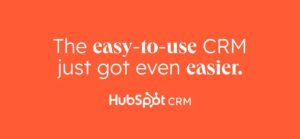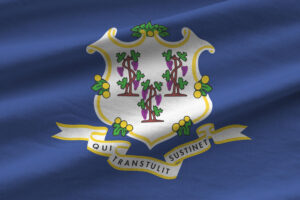Introduction to Operations Management of Products and Services: Overview and Resources
Copyright, Carter McNamara, MBA, PhD
Before reading this topic, you might read about the Relationship Between Managing Supply Chain, Operations, Quality, Customer Relationships and Customer Service.
Sections of This Topic Include
Introduction to Operations Management (OM)
Roles in Operations Management
What is an Operating System?
- What Are Operations Systems?
- What is a System?
- What is an Operations System?
- Align With Strategic Planning
Planning Operations Systems
- Phase 1: Planning Operations Systems
- Product/Service Planning
- Capacity Planning
- Facilities and Layout Planning
- Job and Work Design
- Work Flow Management
Planning Operations, Inventory and Quality Control
- Phase 2: Planning Operations, Inventory and Quality Control
- Production and Scheduling
- Supply Chain Management and Inventory Management
- Service Design
- Quality Control
Managing Productivity
Also consider
What is Operations Management (OM)?
Various Definitions
Operations management focuses on carefully managing the processes to produce and distribute products and services. A great deal of focus is on efficiency and effectiveness of processes. Therefore, operations management often includes substantial measurement and analysis of internal processes.
Ultimately, the nature of how operations management is carried out in an organization depends very much on the nature of the products or services in the organization, for example, agriculture, mining, construction or general services. Here are some additional perspectives on the field.
- “Operations management is chiefly concerned with planning, organizing and supervising in the contexts of production, manufacturing or the provision of services.” — TOPMBA
- “Operations management is an area of management concerned with designing and controlling the process of production and redesigning business operations in the production of goods or services.” — Wikipedia:
What Are Goods and Services?
Basically, a product is a tangible offering to a customer, whereas a service is an intangible offering. The former is usually a one-time exchange for value. In contrast, a service usually involves a longer period of time.
The value of a product is inherent in the tangible offering itself, for example, in the can of paint or pair of pants. In contrast, the value of a service often comes from the eventual benefit that the customer perceives from the time while using the service.
In addition, the customer often judges the value of a service based on the quality of the relationship between the provider and the customer while using the service.
Wikipedia mentions that there are certain differences between manufactured goods and services, including that services can have simultaneous (in the moment) production and consumption, are perishable (there is no inventory management), ownership (ownership of the service is not owned by the customer) and tangibility (it is difficult to evaluate). These features make operations management more of a challenge in services.
Operations Management Specific Roles
Chief Operating Officer
“The chief operating officer (COO), also called the chief operations officer, is one of the highest-ranking executive positions in an organization, comprising part of the “C-Suite”. The COO is responsible for the daily operation of the company,[1] and routinely reports to the highest-ranking executive, usually the chief executive officer (CEO)… The COO is usually the second in command at the firm, especially if the highest-ranking executive is the Chairman and CEO. ”
- Wikipedia
- Chief Operating Officer (COO)
- All About COOs (Chief Operating Officers)
- The Misunderstood Role of the Chief Operating Officer
Operations Manager
A useful definition of the role of an operations manager comes from Investopedia:
- “Operations management is the administration of business practices to create the highest level of efficiency possible within an organization.
- Operations management is concerned with converting materials and labor into goods and services as efficiently as possible.
- Corporate operations management professionals try to balance costs with revenue to maximize net operating profit.”
They oversee product development and delivery, inventory and supply chain management, operations staffing and job design, and production. They oversee an organization’s key operations and, thus, they usually have a wide and strategic view of the organization. The specific duties of the role depend on the nature of the product and service that the company produces and provides, for example, in agriculture, industry or construction.
- Operations Management
- The Role of the Operations Manager
- Operations Manager Job Description
- Operations Manager Job Description
- What Are Operations Manager Job Responsibilities?
What Are Operations Systems?
It can seem overwhelming to read about the numerous activities involved in operations management. One wonders where they fit into an organization? How are they connected? This is where a systems view is very helpful.
What is a System?
Simply put, a system is an organized collection of parts that are highly integrated to accomplish an overall goal. The system has various inputs, which go through certain processes to produce certain outputs, which together, accomplish the overall desired goal for the system.
For example, an automobile is a system. Its inputs are gasoline, a driver, a steering mechanism, tires, as well as various tubes, pipes and electrical cords. The system’s processes are when they work together to burn the gasoline, resulting in the systems outputs of the tires moving and the car steering as the driver prefers. The overall system’s desired goal is a very useful automobile.
What is an Operations System?
The primary activities in operations management is a system — they are all integrated and aligned with each other. The operations manager’s job is to ensure they are all effectively and efficiently working together in order to produce the desired goal of useful goods and services for customers.
Look at this diagram of a system of an overall organizations. Notice the various inputs that are processed to produce certain outputs and outcomes (desired goals).
An operations system includes, for example:
- Inputs — such as expertise, best practices, funding, equipment, facilities and technologies, as well as the customer’s feedback and the overall organization’s strategic priorities
- Processes — such as planning (capacity, product and service design, production, facilities, jobs, inventory, quality control, etc.) and managing productivity to produce high-quality products and services
- Outputs — high-quality products and services
- Outcomes — very satisfied customers
Feedback from customers should be continually collected and considered as an input to the processes of the planning the development and production of goods and services. In that way, the operations system is really a recurring loop of outcomes which, in turn, influence the inputs to the next round of the system.
Align Operations Systems With Strategic Planning
Notice that one of the inputs to the operations system is the strategic priorities of the organization. It is critical that the operations system be closely integrated and aligned with the purpose (the mission) and priorities (strategic goals) of the organization.
Otherwise, the system will not be operating as effectively as it should be. For the system to be operating as efficiently as it should be, there should be closely integrated and aligned parts within the system.
Phase 1: Planning Operations Systems
Product/Service Planning
The planning of products and services (the outputs from the system) includes market research to:
- Clarify the needs and wants of potential groups (market niches) of customers, as well as how those needs and wants might be met with certain products and services.
- Clarify how the new products and services should best be provided to those target markets.
- Identify competitors, as well as potential collaborators.
- Suggest the best terms in pricing for the products and services.
- Suggest how best to advertise and promote to those groups of customers.
The results of that research produce a specification of the product or service. Various feasibility studies and perhaps a prototype might be done, as well, to refine the description of the product or service. See
Product and Service Development
The specification could be further enhanced by adding information about costs to develop and produce the product or service, including employees, facilities and management. This information is often included in a business plan. (This information is also sometimes referred to as the business strategy.)
All About Business Planning
Capacity Planning
Capacity planning includes specifying how many of the outcomes (products or how much service) will be produced and how often. That includes predicting, or forecasting, the demand for those outcomes. The previous market research will be very useful here. There are a variety of other tools that could be useful,
as well.
- Four Steps to Forecast Total Market Demand
- How to Choose the Right Forecast Technique
- What is Demand Forecasting and How Can It Help Your Business?
- What Are the Best Demand Planning Software Tools for 2019?
A useful planning technique to ensure consideration of many possible influences is scenario planning, including to consider various external driving forces that could have a strong influence.
Driving Force Impacts for Environmental Scanning in Strategic Planning
It also might be useful to hire an expert with knowledge about developing the particular product or service.
How to Successfully Hire and Work With an Excellent Consultant
The results of the planning should produce estimates of the needed inputs to produce the product or service, including types of expertise needed, amounts of certain kinds of materials, what technologies to use, etc.
Facilities and Layout Planning
This is one of the most critical activities in operations management, not just because they underlie and facilitate the activities to very effectively and efficiently produce products and services, but also because facilities and their maintenance are one of the most expensive, as well. Fortunately, there is a variety of helpful articles about how to do this acclivity in operations management.
- Relationship Between Plant Layout and Material Handling
- Plant Layout and Material Handling
- Introduction to Manufacturing Facilities Design And Material Handling
- The Ultimate Facility Manager Checklist
Job and Work Design
The Business Dictionary defines work design as:
- “An arrangement in the workplace that has the objective of overcoming employee alienation and job dissatisfaction that comes about from mechanical and repetitive tasks in the workplace. Work design is used by organizations to boost productivity by offering employees non- monetary rewards such as satisfaction from a greater sense of personal achievement. Also called job design.”
From Wikipedia:
“Job design (also referred to as work design or task design) is a core function of human resource management and it is related to the specification of contents, methods and relationship of jobs in order to satisfy technological and organizational requirements as well as the social and personal requirements of the job holder or the employee.”
Work Flow Management
“Workflow management is creating and optimizing the paths for data in order to complete items in a given process. Workflow management includes mapping out the workflow in an ideal state, finding redundant tasks, automating the process, and identifying bottlenecks or areas for improvement.”
kissflow
The map depicts the flow of activities through the system, including its input, processes, outputs and outcomes. These are sometimes also referred to as operations management process maps. (This technique is at the heart of the Business Process Re-Engineering approach.)
- Workflow
- What Should You Include in Your Operations Management Process Map?
- 9 Powerful Workflow Examples For Smart Teams in 2019
Phase 2: Planning Operations, Inventory and Quality Control
Production and Scheduling
Production Planning
This is the processes part in the operations system where the inputs are transformed into the desired product or service. Considerations include, for example:
- Are there technologies currently or soon available that could expedite the production?
- Are there best practices suggested by various experts about the product or service?
- Can components of the product be purchased as-is or off-the-shelf?
- What components are needed, in total, to produce the product or service?
- What are the costs associated with developing and producing the product or service?
- What are the estimated demands of customers for the next six months? 12 months? 18 months? These estimates drive the scheduling of the production activities.
This activity also includes developing a detailed map of the activities required to obtain, assemble, integrate and test the product or service before it is provided to customers.
- What Makes a Good Production Plan?
- What Must Be Considered for Production Planning?
- Production Planning
- Production Planning
Scheduling
A critical activity in ensuring that the operations system is highly effective and efficient is coordinating (scheduling) the timing of activities to organize, monitor and optimize the equipment, people and production activities. Scheduling has a major impact on the productivity of the system.
- Scheduling (production processes)
- Production Scheduling Approaches for Operations Management
- Scheduling (in operations management)
Supply Chain Management and Inventory Management
Supply Chain Management
“In business and finance, supply chain is a system of organizations, people, activities, information, and resources involved in moving a product or service from supplier to customer.” Wikipedia
” Supply chain management (SCM) is the active management of supply chain activities to maximize customer value and achieve a sustainable competitive advantage. It represents a conscious effort by the supply chain firms to develop and run supply chains in the most effective & efficient ways possible. Supply chain activities cover everything from product development, sourcing, production, and logistics, as well as the information systems needed to coordinate these activities.”
- Supply Chain Resource Cooperative
- Guide to Supply Chain Management for any Organization: Overview and Resources
- What is Supply Chain Management (SCM)
- CSCMP Supply Chain Management Definitions and Glossary
- The Death of Supply Chain Management
- What Are the Main Supply Chain Challenges?
- The Seven Deadly Supply Chain Sins
Inventory Management
Inventory includes unprocessed materials, finished products, supplies and works-in-progress. Inventory management is a part of supply chain management that oversees the inventory items from manufacturers to storage to where they are sold. There must be a very careful balance between the size of the inventory of items compared to the actual rate of their sales.
Too many items in inventory means their costs are not recovered in a timely manner from their sales. It also might mean high costs of storage. Insufficient numbers of items means the organization cannot meet the customer demand, resulting in lost revenue.
- What is Inventory Management?
What is Inventory Management? - Your Essential Guide to Effective Inventory Management + 18 Techniques You Need to Know
- 3 Inventory Management Problems and How To Avoid Them
- 5 Common Inventory Mistakes and How to Avoid Them
Service Design
In the past, an organization was expected to provide a product or service to the customer, and then that transaction was done — the activity was done to the customer. The customer was more or less at the mercy of the organization.
Today, that is changing dramatically. Customers have a much wider range of organizations, products and services to choose from, and they can access them instantly. Customers can also access numerous sources of useful opinions or reviews about the product or service even before they buy them.
Thus, it is more important than ever that organizations remain very good at attracting, satisfying and retaining customers. That requires a carefully designed and implemented customer services plan.
Service design “is the activity of planning and organizing people, infrastructure, communication and material components of a service in order to improve its quality and the interaction between the service provider and its customers. Service design may function as a way to inform changes to an existing service or create a new service entirely.”
- Wikipedia
- Customer Service Business Plan Template
- Why Your Business Needs a Customer Service Plan
- 8 Steps to Creating a Superior Customer Service Plan
- How to Create a Customer Service Plan
- How to Create a Customer Service Plan
Quality Control
Quality management, including quality control, is crucial to effective operations management, particularly continuous improvement. More recent advancements in quality, such as benchmarking and Total Quality Management, have resulted in advancements to operations management as well.
Quality Management
Quality control can be defined “part of quality management focused on fulfilling quality requirements.” While quality assurance relates to how a process is performed or how a product is made, quality control is more the inspection aspect of quality management. An alternate definition is “the operational techniques and activities used to fulfill requirements for quality.”
- American Society for Quality
- Quality Control
- Quality Control (QC): Definition, Importance and Tools of Quality Control
- Quality Control Techniques
Phase 3: Managing Productivity
What is Productivity?
In the context of operations systems, productivity is defined as the ratio of the output to the input of the system. The higher the ratio, the more productive the system. One of the most common measures of productivity is output per hour. This is important especially in manufacturing industries.
- The Concept of Productivity
- 5 Steps to Achieving Better Results through Productivity Management
- How to Create a Successful Productivity Management System
- Productivity and Operations Management
Methods to Measure and Improve Productivity
Where many guidelines are in regard to increasing employee productivity, Productivity: A Practical Handbook distinguishes between three factors that drive productivity, not all of them around employee productivity, including:
- Job-related
- Resource-related
- Environment-related
The above Handbook is a very useful overview of the many different methods to improve productivity.
Here are various measures, or indicators, to help monitor and assess the levels of productivity.
- Measuring Productivity Levels
- Operations Management (scroll down to “Metrics: efficiency and effectiveness”)
General Resources
Software / Tools
- How to Use Operations Management Tools in Business
- Operations Management Software
- Operations Management Software (reviews)
Organizations and Journals
For the Category of Operations Management:
To round out your knowledge of this Library topic, you may want to review some related topics, available from the link below. Each of the related topics includes free, online resources.
Also, scan the Recommended Books listed below. They have been selected for their relevance and highly practical nature.
 Sections of this topic
Sections of this topic














